TS011
When It's Time
Joe Fonda
"Même si le musicien fait corps avec sa contrebasse, c’est bien d’un dialogue dont il s’agit ici: Joe Fonda manie l’archet, caresse, pince, slappe les cordes, scatte, halète sous le coup de l’effort, murmure à l’oreille de l’instrument comme pour qu’il réponde à ses questions, à ses angoisses. ... Une performance au sens noble du terme."
Claude Loxhay
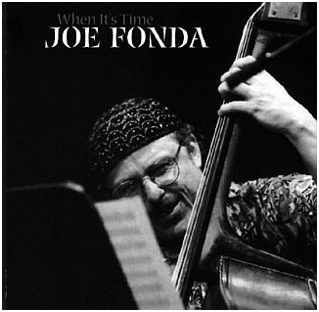
JOE FONDA – WHEN IT’S TIME
1) Second Time Around
2) My Time With J. & E.
3) The Other Side Of Things
4) When It’s Time (Attilla Zoller)
5) I Stepped Into A Dream
6) Been There Before
7) No One There At All (Brenda Bufalino)
8) Soon To Know
All compositions by Joe Fonda except where indicated
Joe Fonda: double bass
recorded at SYSTEMS TWO, Brooklyn, NY, May 23, 1999 by David Baker
photography by Jan Vernieuwe
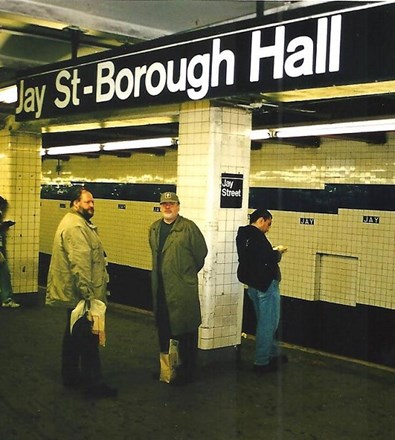
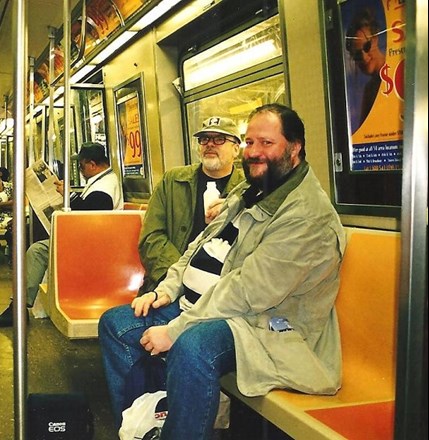
With David Baker heading for Brooklyn (Systems Two Studio) - 1999 © Emile Clemens
SOME REVIEWS:
“Même si le musicien fait corps avec sa contrebasse, c’est bien d’un dialogue dont il s’agit ici: Joe Fonda manie l’archet, caresse, pince, slappe les cordes, scatte, halète sous le coup de l’effort, murmure à l’oreille de l’instrument comme pour qu’il réponde à ses questions, à ses angoisses. ... Une performance au sens noble du terme. ”
Claude Loxhay in “Jazzaround” (Belgium), July/August 2000
“Contrabassisten zijn, net als de meeste echte muzikanten, verliefd op hun instrument. Ze hebben daar goede redenen voor, al worden die in de muziekpraktijk zelden naar waarde geschat. Nochtans speelt de contrabas een sleutelrol, bijvoorbeeld in het vormgeven van de basis voor improvisatie. Niet zelden is de kwaliteit van een improvisatie in de jazz terug te voeren op de soepelheid die de contrabassist aan de dag weet te leggen. De capriolen van een solist komen op een veerkrachtige ondergrond des te beter uit. Maar de echte reden waarom contrabassisten zo houden van hun instrument ligt elders: ze zijn verliefd op de klank, op de fantastische, diepe trillingen die uit de buik van het instrument opstijgen.
Joe Fonda (bekend van eigen projecten en van de recente ensembles van Anthony Braxton) kreeg die kans in de schoot geworpen door zijn Belgische vrienden van Jazz’halo. Hij heeft de kans gegrepen om op de cd When It’s Time een breed palet aan mogelijkheden neer te zetten. Zijn aanpak is soms heel melodisch, zoals in ‘Second Time Around’ en in het titelnummer, verwoede – en overigens best geslaagde – pogingen om de song helemaal tot zijn recht te laten komen. Soms kiest hij het avontuurlijke pad met klankexperimenten en speciale effecten. Naar mijn gevoel niet echt zijn sterkste kant.”
Didier Wijnants in “De Morgen” (Belgium), 08.07.2000
“Aunque no es el primero ni será el _ltimo en hacer un disco de contrabajo solo, la verdad es que sigue necesitándose mucho valor para hacerlo. Valor que Joe Fonda demuestra sobradamente tener en este disco a su nombre grabado sin acompañamiento de ning_n tipo. Fonda, importante bajista de la escena alternativa bien conocido por sus experiencias junto a, entre otros, Anthony Braxton, Michael Rabinowitz o Thomas Chapin, y en la actualidad también presidente en funciones de la braxtoniana Tri-Centric Foundation, se despacha un tour de force de consideración, en el que además de mostrar una distreza impecable como instrumentista le queda el suficiente fuelle como para imprimir personalidad musical a cada pieza. El sentido del humor es otro factor importante en este disco, hasta tal punto que uno no sabe cuándo Fonda está reflexionando o cuándo está realizando una interpretación irónica. Finalmente decir que el disco lo ha editado el sello bega Jazz’halo. Que la grabación es estupenda y que he aqui una muestra clara de cómo se consigue prestigio.”
G. Lázaro in ‘Cuadernos de Jazz’ (Spain), 10/2000
“Joe Fonda ... One More With Feeling.
‘This record shows the passion and energy I bring to music,’ says Joe Fonda, who plays solo without overdubs on When It’s Time (Jazz’halo). ‘I wanted the album to represent my live performances.’ Joe wrote most of the CD’s compositions, which let him display the extended techniques he’s been developing for years. On ‘My Time with J.&E.’ Joe uses the bow’s back side and frog to make percussive, clipping sounds, and he executes E- and G-string double-stops by holding the bow upside-down and playing the strings from beneath. At the end he creates kalimba-like effects with thumb-and-index harmonics over the fingerboard. ‘Second Time Around’ deals with degrees of velocity and various pizzicato textures, while ‘Been There Before’ features bass prepared with pieces of paper and other objects between the strings. Slightly more conventional tunes include ‘Soon To Know’, with its extended Jaco-like 16th lines; the boppish ‘I Stepped into a Dream’; and ‘The Other Side of Things’, which has an R&B feel. ‘I’m going back to my roots,’ says Fonda, who plays a 100-year-old German bass with a Juzek neck, assembled by master craftsman Louis Deleone. Joe strings it with Thomastiks and uses a David Gage pickup, Walter Woods amp, and an Audio Pro Media cab.
Born in 1954 in Amsterdam, New York, Joe started out playing with local rock, R&B and blues groups. ‘I got into jazz because my father was a jazz trumpeter and my mother sang with the band. They played music from the 1930s and ‘40s, and when I’d developed to a certain point, he invited me to join.’ Joe went on to play with mainstream jazzers such as pianist Kenny Barron as well as top avant-gardists like trumpeter Leo Smith and reed man Anthony Braxton, with whom Fonda has recorded and gigged since ’93. Braxton is part of Fonda’s interdisciplinary ensemble From The Source, which includes four musicians, a tap dancer, and a body healer. Joe also co-leads a group with pianist Michael Jefry Stevens; their latest is ‘Evolution’ (Leo). Fonda ‘s other recent work includes The Sino American Challenge (www.joe-fonda.digitalspace.net), a duet with instrumentalist Xu Feng Xia and her 21-string guzheng. In the ‘Full Circle Suite’ (Cimp) and ‘Bottoms Out’ (Cadence) Joe doesn’t give himself a lot of solo space, instead showing off his economical, percussive ensemble work in the tradition of Wilbur Ware. Sometimes, he notes, ‘The ensemble sound is more important than soloing.’”
Harvey Pekar in ‘Bass Player’ (U.S.A.), October 2000
“Au sien de la galaxie Braxton, du septette au Tri-Centric Orchestra, le contrebassiste Joe Fonda est celui sur lequel repose toute la dynamique d’ensemble. Pas étonnant donc, que s’attaquant au solo, ce soit moins pour faire œuvre de soliste que pour déployer un univers personnel sur des chemins de traverse. Ce qui frappe en premier lieu, c’est son engagement physique. Un corps à corps frénétique avec l’instrument, la voix doublant les lignes mélodiques, dans un murmure ou l’ébauche du chant. Parfaitement rendu par la prise de son signée David Baker, le jeu charnu, parfois abrupt de Fonda ne perd jamais le sens de la pulsation. Vélocité des lignes qui brisent dans l’aigu, cordes frottées, frappées … de cette matière foisonnante, la mélodie semble surgir avec un lyrisme naturel. ”
Thierry Iepin in ‘Jazzman’ (France), 09/2000 * * *
“Périlleux exercice que l’album de contrebasse solo. A fortiori lorsqu’on évolue, comme cet ex-sideman d’Anthony Braxton, dans les voies expérimentales aux frontières du jazz d’avant-garde et du contemporain. Qui attend de la musique qu’elle soit rythme et mélodie ira donc chercher son bonheur ailleurs. Mais en admettant l’art comme une recherche, ce CD devient franchement remarquable. Notamment parce que Joe Fonda n’intellectualise pas. Ses halètements, apnées et murmures dans l’effort traduisent au contraire une véritable bagarre avec l’instrument. Cordes pincées et frottées à l’archet font ici jeu égal avec de nombreuses autres techniques beaucoup moins orthodoxes. Expression spontanée, on l’aura compris, pour une musique à part, pleine d’inattendus. ”
André Joassin in ‘Le Soir’ (Belgium), 22.11.2000
”Een eenvoudige maar welsprekende albumtitel : ‘Joe Fonda – When It’s Time’. Het was voor Fonda het ogenblik om de klus alleen te klaren, solo, de contrabas de hele cd door als enig instrument op het voorplan, een avontuur dat tekenend is voor een van de meest miskende bassisten van zijn tijd. De thans 45-jarige Joe Fonda werd uit muzikale ouders in Amsterdam, New York, geboren. Als tiener speelde hij gitaar. Via albums van ‘Weather Report’ en Freddie Hubbard werd hij jazzbewust en dan ook jazzmusicus. Zijn twee inspiratiebronnen zijn free musici-componisten multi-rietinstrumentist Anthony Braxton en trompettist Leo Smith. Hij trad dan ook aan met diverse Braxtongroepen, evenals met Leo Smiths ‘Creative Musicians Improvisers Forum And Orchestra’. Hij werkte tevens met de ‘Sonomana Dance Company’ en ‘The American Tap Dance Orchestra’. Fonda is nu eenmaal een creatief kunstenaar met een brede kijk én op de podiumkunsten (de dans) over ’t algemeen én op jazz in het bijzonder. Hij zegt zelf geen onderscheid te maken tussen Bill Evans en Cecil Taylor evenals tussen Sun Ra en Charlie Parker. Dit blijkt uit deze unieke cd, waar we vooreerst de fysieke eenheid van musicus en instrument vaststellen. Hij drukt zich, doorgaans op eigen composities, vrij uit, en demonstreert dan ook een perfecte synchronisatie van beide handen. Hij munt zowel arco als pizzicato uit, plukt, streelt en martelt de contrabas, transparante baslijnen, geladen suites van noten, vliegensvlug in een breed akkoordenspel van geplukte op gestreken gedeelten overgaand. Hij doet zijn instrument spreken en fluisteren, terwijl hijzelf mee neuriet. Zijn voorkeur voor het lage register van zijn instrument verhoogt de dramatische intensiteit van zijn speelwijze. Kortom in deze sessie van mei 1999 haalde Joe Fonda een scheppende krachttoer van belang uit. De uitgave richt zich dan ook tot bassisten en freaks van de contrabas."
Juul Anthonissen in ‘Juul’s halo’, September/October 2000
“On n’attendait peut-être pas le contrebassiste Joe Fonda, découvert en accompagnateur d’un Anthony Braxton pianiste puis en co-leader stimulant d’un quintet avec Michael Jefry Stevens, sur le terrain de l’exercice solitaire. On connaît certes ses qualités de dynamisme, mais allait-il avoir l’étoffe d’un soliste ? When it’s time emporte le morceau, par la générosité et l’affabilité de son signature, qui transparaissent à chaque instant. Derrière l’instrument, on entend souvent le souffle et la voix de l’homme. On reconnaît sa dualité, déjà exprimée au sien du Fonda-Stevens Group, à savoir son attachement aux racines du blues et son goût pour l’aventure. Un archet pour surprendre et un jeu en pizzicato pour affirmer la joie du tempo, avec un sens très affûté du rebond. Portrait de l’artiste en coureur de fond et don de soi des plus humanistes, voici un disque qui enchante."
Claude Colpaert in ‘Improjazz’, November/December 2000
“What an enjoyable solo acoustic bass outing. Long time collaborator with Braxton, Michael Jefry Stevens and others, it’s good to hear him on his own, searching as he creates, singing softly in a non-Jarretty (i.e.: whiny) way in the background along with his music. You feel his fingers pluck, the resin gets on your pants; you feel as if you’re creating this along with him."
Steve Koenig in ‘Jazz Weekly.com’, 2001
“Taking a more lyrical approach to bass playing is Fonda on TS011. The majority of tunes he plays are original compositions, some of which are adventurous exercises with substance and body, while others are more loosely knit in an irregular weave. Fonda is a passionate bass player. You can hear his mouthing of the themes and heavy breathing as he pours his soul into the solos. At times, he actually breaks out into a muted singing voice, echoing the notes his fingers are projecting. He performs primarily in the pizzicato mode, slipping into arco for short statements of emphasis before returning to the heavy strumming and plucking. ‘Been There Before’ is an exception, being built on extensive arco playing in the high register to evoke the characteristics of a violin.
The typical Fonda solo begins with a loosely structured theme statement followed by a total re-examination and recasting of it. The theme stage is a home base to which he returns frequently, only to scurry off again for more dexterous runs up and down the neck. Rather than being random displays of bass manipulation, the songs evolve as improvisations centred on and sprung from these initial directional concepts. Fonda alters the tempo within each song with regularity, developing them into galloping wisps and then abruptly altering the course as new ideas bombard his mind and fight for recognition. He knows exactly where he is going and allows the bass free rein to convey through his fingers what his mind is instantly composing. Although the composition of his voice with the instrument can be somewhat disconcerting, it is an extension of his artistic expression and soon goes unnoticed. Fonda plays from his heart on these solos, which convey his fine talent and his obvious love for the bass.”
Frank Rubolino in “Cadence” (U.S.A.), February 2001
"Zwischen Blues und Braxton gibt es für den amerikanischen Bassisten Joe Fonda keine Schranken, nur ein fliessendes Kontinuum, das man nicht willkürlich in Schuladen zerteilen darf. Fonda, der als Bluesbassist begann, sieht heute Anthony Braxton, mit dem er mehrere CD’s eingespielt hat, als musikalischen Zukunftsträger. Einige völlig unterschiedliche Facetten seines Musizierens repräsentieren drei aktuelle CD’s Joe Fondas.
“When It’s Time” ist seine erste Bass-Solo-Aufnahme aus dem Jahr 1999. Sie zeigt einen feinfühligen und phantasievollen Improvisator und einen virtuosen Techniker. Arco-Spiel, Flageolett, Obertöne, das Anschlagen und Reißen der Saiten, mehrstimmiges Spiel, auch abwechselnd gezupft und gestrichen, all das verleiht seinen Improvisationen eine klangliche Vielfalt, die ihresgleichen sucht. Ein Leckerbissen ist das Titelstück, eine Komposition von Attila Zoller, die Fonda quasi gitarristisch interpretiert. Der Bassist ist äußerst agil bei der Sache, und sein begleitender Singsang ist ständig gegenwärtig. … "
Benno Bartsch in “Jazz Podium” (Germany) from April 2001
“Joe Fonda's sole solo excursion from 1999 demonstrates a degree of maturity in concept and execution that marks it as a unique high point in his oeuvre to date. On When It's Time, Fonda approaches mostly original tunes with a melodic focus, accompanied by ever-present vocalizations. (Listeners with a phobia of humming and moaning take notice.) The recording has a warm, full-bodied sound which captures nuance and detail. While the core of these acoustic bass improvisations tend to rely on a head-solo-head type of structure, the definitive aspect of the recording is the way the bassist subverts structure and arrives at unexpected stopping points along the way. Fonda remains open to the groove (e.g. "The Other Side of Things") but his intermittent swing generally capitulates to metric redefinition as he pauses to reflect or rushes into new ideas.
On When It's Time, Fonda generally prefers a clean single-note plucking approach, though at times he explores arco passages, double-stops, and extended technique (eg. "Been There Before"). He mostly leaves harmony open, avoiding what he would term a "literal" interpretation of the music. However, he also avoids the outright explosive tension which characterizes William Parker's solo work, for example--tending toward a more introspective and understated approach. At times one can pick out running bass lines, arpeggiated chord progressions, and step-by-step deconstructions of simple themes... these items are like beads on a string, which Fonda twists and twirls as his vision evolves. The purity of the solo experience is quite revealing about the way Fonda views the relationship between structure and freedom, an aspect that has dominated his work within groups.”
Nils Jacobson - AllAboutJazz
"When It's Time, an apt title, shows that Fonda has the facility to do what he wants. He can explode into frenzy of buzzing bowing if he wishes, race from the highest pitch to the lowest, or even reverberate tones by beating the front of his strings. Most comfortably and most impressively he's most at ease sounding out mid range percussive notes.
However on "No One There At All," written by dancer Brenda Buffalino, another of his collaborators, he sounds out variations on the tune before the theme reveals itself. Interestingly enough, the patterns that then appear seem to mirror one of those near-tuneless dirge saxophonist Arthur Doyle plays. What's equally bizarre is that the theme resembles that of "Cadence," a short improvisation on This & That, recorded more than three years later and a continent away by Cox. Maybe it's a particular bass line that lies easily under the fingers."
Ken Waxman in Jazzweekly.com
“It would be a mistake to try and situate this record in a continuum of solo bass works that have been created in the past 30 years, starting with Barre Philips and Motoharu Yoshizawa’s work in the late 60’s. Joe Fonda is not on some kind of mission to redefine the bass and its role in contemporary music; he’s not a Dresserian guru of extended techniques or someone who has a concept of solo bass that’s independent of his ensemble work, like Dominic Duval. On the contrary, Fonda’s solo bass music is an expression of the same aesthetic that informs his ensemble work. Considering that his ensemble work counts as some of the best in the past decade of jazz, that makes this solo recording a very worthwhile listen. After all, any list of the five best jazz groups in the past ten years that didn’t include the Fonda-Stevens group would just be a joke. The music he plays here is essentially the same as when he takes a solo in one of the numerous ensembles he participates in; you can hear the other instruments ready to take slices of his bass whirlwind and chew them up in Braxtonian parallel layers of crystalline thematicism. His solo pieces here are filled with the same sort of energetic twists and turns that make the Fonda-Stevens group so enrapturing at their best. In fact, it’s kind of nice to hear one voice of such vital music isolated to make it easier to hear the naked logic of an individual musician. Of course, after a spin of this disc I’m anxious to hear Mark Whitecage or Paul Smoker working their magic in tandem with Fonda, but I can do so having spent some quality time getting acquainted with the rhythmic demons Fonda likes to wrestle with. By “rhythm” I mean sweaty, pumping, rubber dances between fingers and strings, with globs of grease oozing out of every note. In fact, Fonda picks up his bow for only two of the eight pieces here; he prefers to pluck his way into epic grooves that mutate endlessly without loss of momentum. A perfect example is “The Other Side of Things”, one of my two favorite pieces on the disc; Fonda tosses out some concise and catchy themes and then runs in another direction with enough notes left in his hand to keep his rapid stream of variations connected to the bigger picture. The net result is that classic sort of delicious tension where you really want to hear a certain theme come back in its entirety but you’re still pretty happy with things as they’re going. My other favorite is “My Time with J. & E.”, where Fonda makes some gripping transitions between first-rate timbral and textural explorations on one hand, and his more characteristic rhythmic boxing on the other. It makes perfect sense that the first tune on the disc is based on an old R&B riff: Fonda’s music is rooted in a lot of good-old fashioned musical values, and he carries them with him even when he’s pushing himself to be a full-blooded participant in the avant-garde jazz culture that has been one of his main sources of musical nourishment, whether at the hands of Anthony Braxton, Leo Smith, or the multi-media performance collectives he's had an affinity for over the years.”
This review is reprinted courtesy of www.allaboutjazz.com/italy
Michael A. Parker in allaboutjazz.com (12.2001)
“I don't know if bassist Joe Fonda played basketball growing up in Amsterdam, NY, but if he did, I can guess the nature of his game. He was one of those undersized, scrappy guards the other team hated to play. Not the most athletic guy on the team, he must have been a gym rat possessed of an almost manic energy, playing his heart out every minute, covered with floor burns. Probably a fun guy to have on your team, too. That take-no-prisoners approach comes through in his bass playing and is everywhere evident in this almost-solo bass CD. Almost? Well, Fonda accompanies his instrumental work with a variety of sounds, from near singing to strenuous exhalations, a cross between Keith Jarrett's vocalizing and tennis player Monica Seles' grunting. How you receive this is a matter of personal taste, but like it or hate it, there's no avoiding it. Fonda is essentially a rhythmic player; there's relatively little here in the way of extended technique (not a lot of arco work, either, except on the harmonic-laden "Been there Before"). The opening "Second Time Around" (an original, not the Jimmy/Sammy standard) sets out the CD's MO. It opens with a hard-plucked figure that implies a strong pulse and proceeds in a fairly linear fashion with a fair amount of energetic playing that never lapses into empty virtuoso display. He sets up an almost street beat on "The Other Side of Things", then dribbles around and through it, enjoying every head fake and stutter step along the way. There's a palpable sense of Fonda really leaning into his material here; he's not one to linger over beautiful moments, even on the down tempo selections like "No One There At All" by tap dancer Brenda Bufalino (how's that for rhythm?). If there's nothing here to elevate Fonda quite to the level of his finest contemporaries (William Parker, the Marks, Dresser and Helias, probably Dominic Duval) it's still an entertaining record and, more importantly, a revealing musical portrait of a man whose love of and fierce commitment to the music comes out in every bar.”
John Chacona in OneFinalNote.com (May 2002)
THE RECORDING SESSION
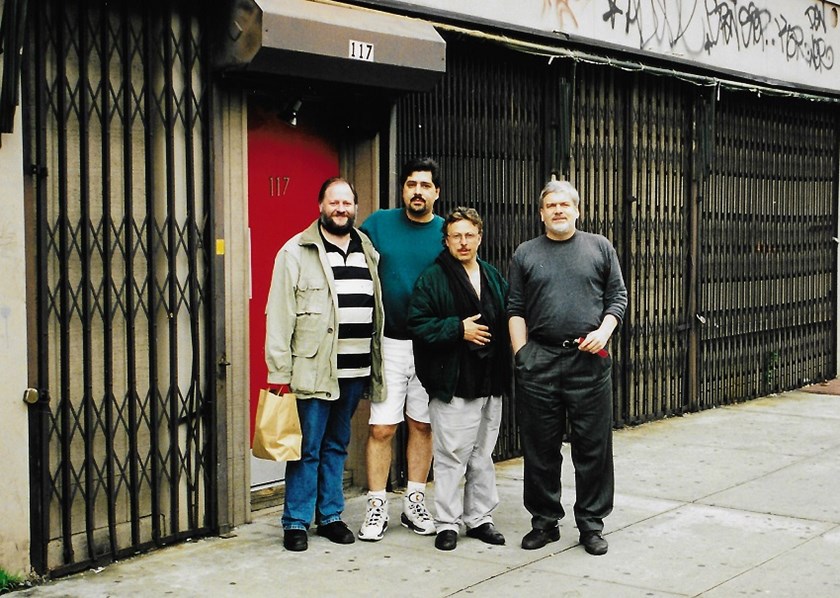
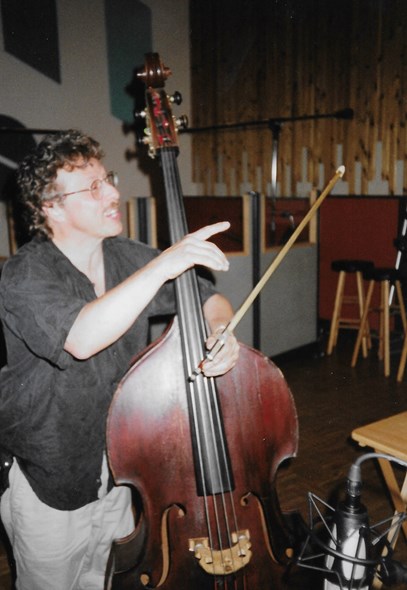
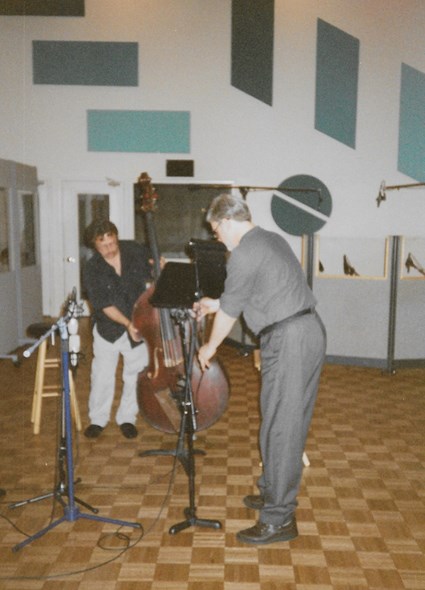
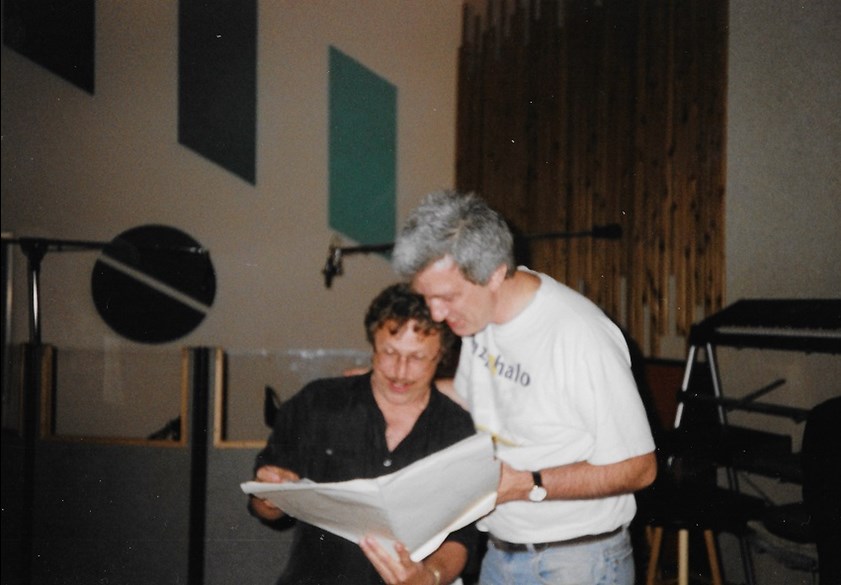
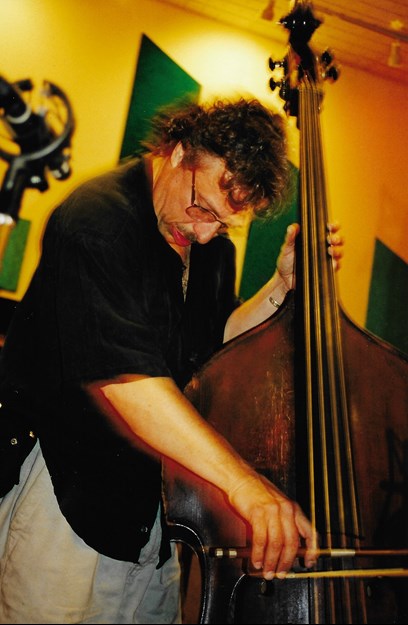
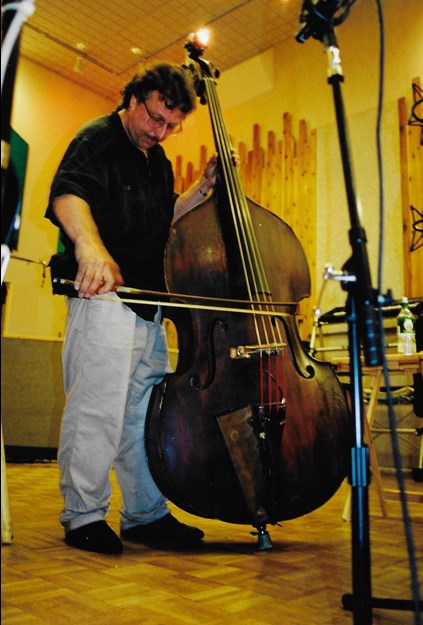
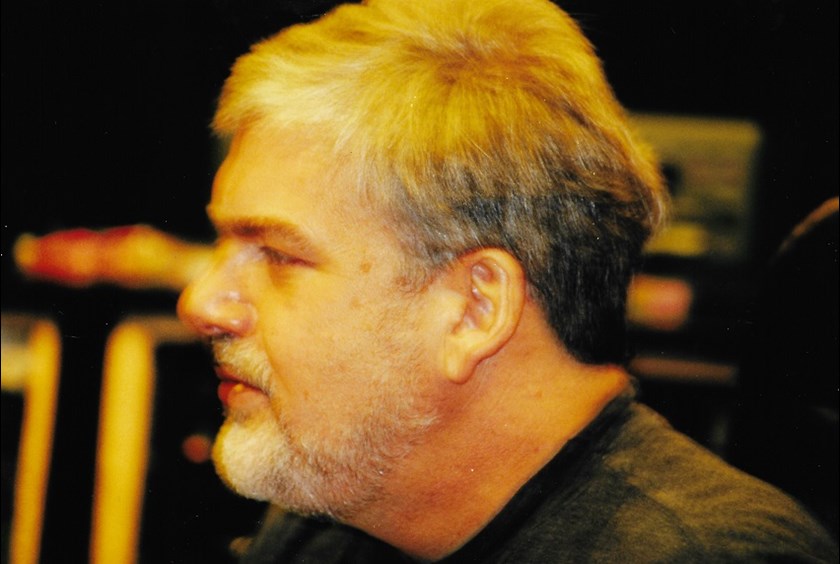
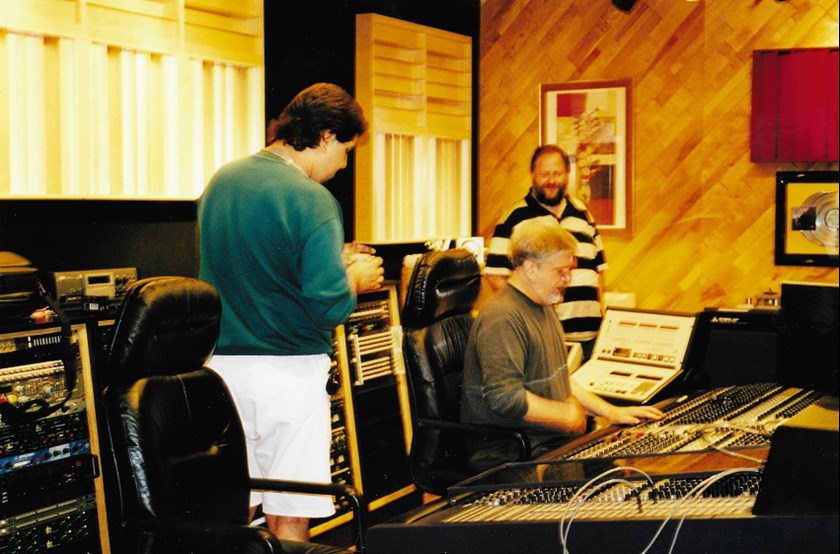
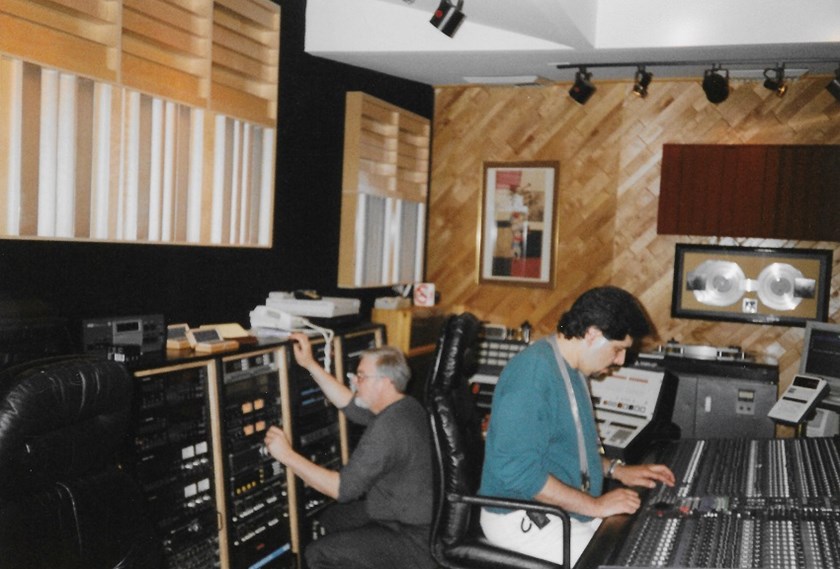
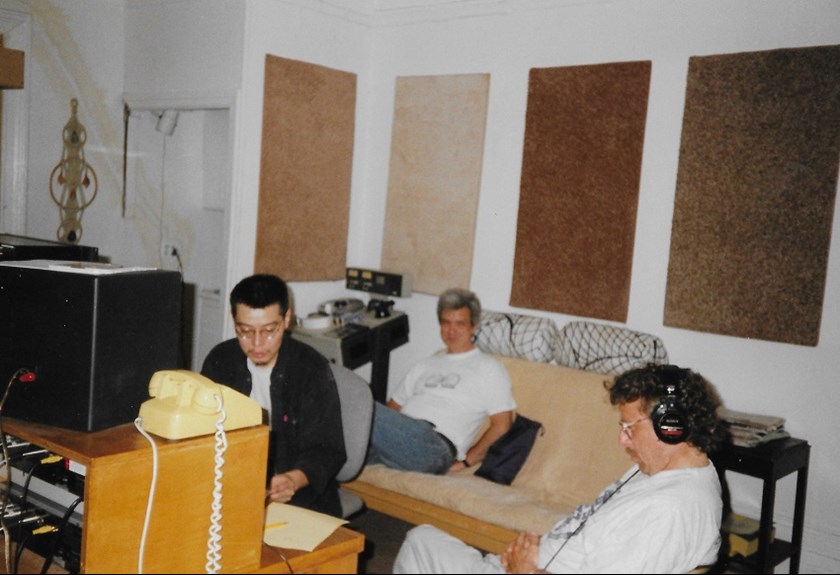
Remix and editing with Katsuhito Naito
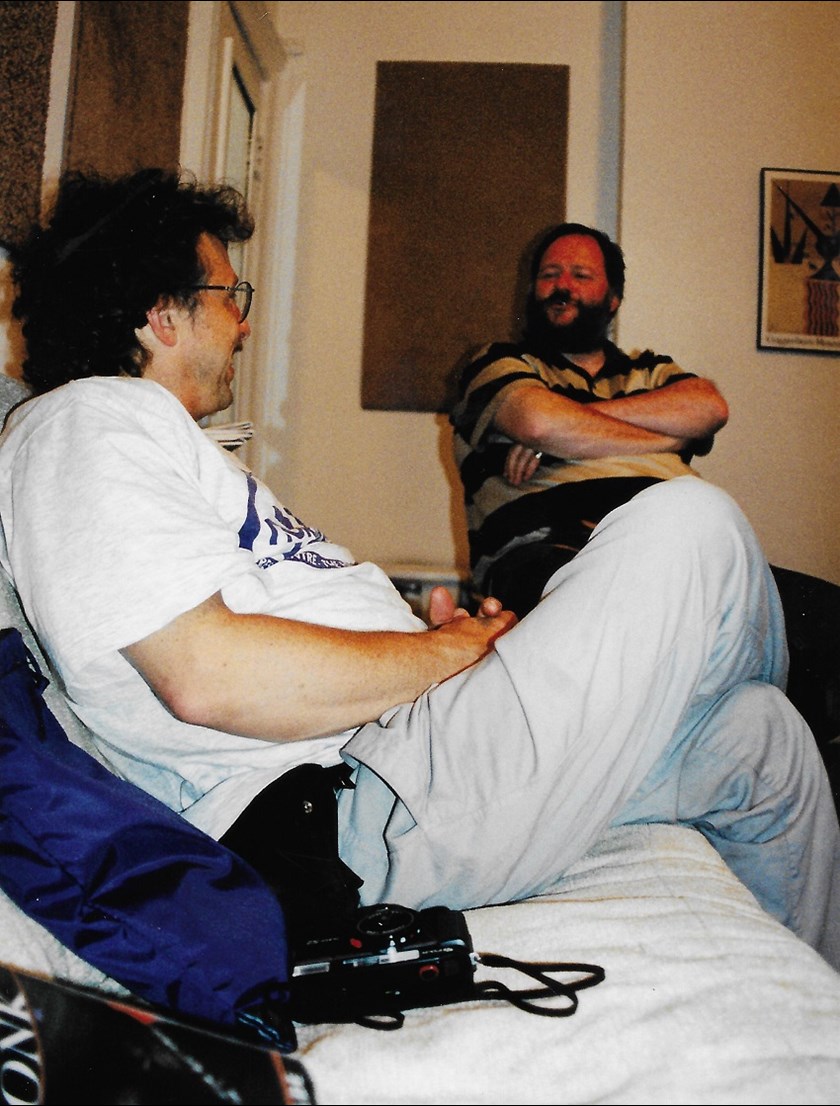

© Jos Demol & Emile Clemens
In case you LIKE us, please click here:

Foto © Leentje Arnouts
"WAGON JAZZ"
cycle d’interviews réalisées
par Georges Tonla Briquet

our partners:
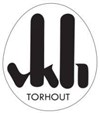
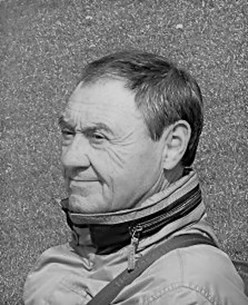
Silvère Mansis
(10.9.1944 - 22.4.2018)
foto © Dirck Brysse
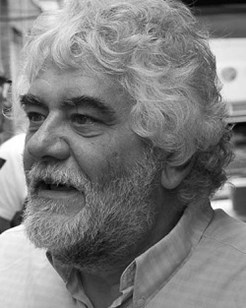
Rik Bevernage
(19.4.1954 - 6.3.2018)
foto © Stefe Jiroflée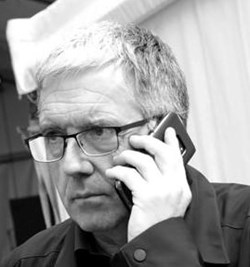
Philippe Schoonbrood
(24.5.1957-30.5.2020)
foto © Dominique Houcmant
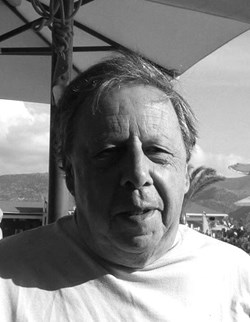
Claude Loxhay
(18/02/1947 – 02/11/2023)
foto © Marie Gilon
Special thanks to our photographers:
Petra Beckers
Ron Beenen
Annie Boedt
Klaas Boelen
Henning Bolte
Serge Braem
Cedric Craps
Christian Deblanc
Philippe De Cleen
Paul De Cloedt
Cindy De Kuyper
Koen Deleu
Ferdinand Dupuis-Panther
Anne Fishburn
Federico Garcia
Robert Hansenne
Serge Heimlich
Dominique Houcmant
Stefe Jiroflée
Herman Klaassen
Philippe Klein
Jos L. Knaepen
Tom Leentjes
Hugo Lefèvre
Jacky Lepage
Olivier Lestoquoit
Eric Malfait
Simas Martinonis
Nina Contini Melis
Anne Panther
Jean-Jacques Pussiau
Arnold Reyngoudt
Jean Schoubs
Willy Schuyten
Frank Tafuri
Jean-Pierre Tillaert
Tom Vanbesien
Jef Vandebroek
Geert Vandepoele
Guy Van de Poel
Cees van de Ven
Donata van de Ven
Harry van Kesteren
Geert Vanoverschelde
Roger Vantilt
Patrick Van Vlerken
Marie-Anne Ver Eecke
Karine Vergauwen
Frank Verlinden
Jan Vernieuwe
Anders Vranken
Didier Wagner
and to our writers:
Mischa Andriessen
Robin Arends
Marleen Arnouts
Werner Barth
José Bedeur
Henning Bolte
Erik Carrette
Danny De Bock
Denis Desassis
Pierre Dulieu
Ferdinand Dupuis-Panther
Federico Garcia
Paul Godderis
Stephen Godsall
Jean-Pierre Goffin
Claudy Jalet
Bernard Lefèvre
Mathilde Löffler
Claude Loxhay
Ieva Pakalniškytė
Anne Panther
Etienne Payen
Jacques Prouvost
Yves « JB » Tassin
Herman te Loo
Eric Therer
Georges Tonla Briquet
Henri Vandenberghe
Iwein Van Malderen
Jan Van Stichel
Olivier Verhelst



